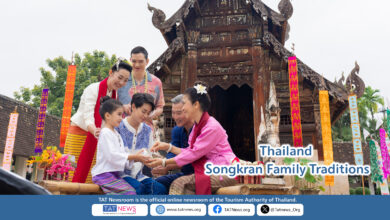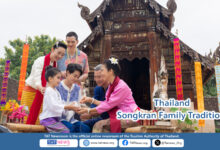Bangkok, 19 May, 2021 – Situated in the Gulf of Thailand 35 kilometres off the coast of Surat Thani, Ko Samui is Thailand’s second largest island after Phuket and is certainly one of Asia’s favourite resort islands, going by the various readers’ choice awards and other international accolades it has won over the years.
Ko Samui’s biggest attraction are its beaches, and there are a number of these spread around the island’s coastline. Each beach offers a different vibe and accommodation to suit ranging – across the island overall – from budget through mid-range up to luxury five-star, from the bustling Chaweng and Lamai Beaches to the more peaceful and laidback Bophut, Mae Nam and Choeng Mon Beaches.


Primarily a beach destination it might be, yet the diversity in beaches helps give Ko Samui a broader appeal.
Should the time come for a break from the beach scene, Ko Samui delivers in this aspect as well. For those seeking a touch of tropical adventure, the choice includes jeep or truck safari tours that venture into the island’s mountainous and forested interior, zipline trails that soar through jungle and park scenery, and 4-wheel ATV bike trips through scenic off-road terrain.
Among the most prominent of the island’s sights are its various Buddhist temples and there is even a couple of Chinese temples. Probably the best known is the Big Buddha temple (known locally as Wat Phra Yai) on the small rocky island of Ko Fan off the northeastern corner of the island.

Reached by a causeway, the temple features a golden, 12-metre Buddha statue that sits in the posture of subduing Mara and is viewable from several kilometres away. It is a major local landmark, so much so, the beach here is commonly referred to as Big Buddha Beach.
The Mummified Monk at Wat Khunaram, about six km west of Lamai Beach, is a more unusual attraction. The monk Luangpho Daeng died in 1973 and his body has since been on display in a glass case, until this day showing little sign of decay except for the eyes which are covered with sunglasses. Shortly before his death, he is said to have told his followers if his body was to decompose, he should be cremated but if not, then he wanted to be put on display as a visual reminder of the Buddha’s teachings.
Then of course, there is the attraction that never fails to solicit chuckles among those who visit it – the Grandpa and Grandma Rocks. Located on the southeastern coast a couple of kilometres south of Lamai Beach, these two rock formations – known locally as Hin-Ta Hin-Yai – are famous for their resemblance to the male and female genitalia. While the rocks amuse the tourists, they are revered by the locals who believe they can bring luck and fertility.

Waterfall-lovers can visit the Hin Lat and Na Muang Waterfalls. Just over 3 km from Nathon Town, Hin Lat Waterfall is next to the small forest monastery of Wat Hin Lat Waterfall,which offers a peaceful and inspirational setting to appreciate, while Na Muang Waterfall – about 12 km from Nathon Bay – features two cascades named for the purple shade of their rock faces.
The range of sights to see and activities to do is enough to fill up a day or two away from the beach frolicking and poolside sunbathing, and Ko Samui’s geographical size means it is not that far from place to place. The island is roughly 25 km from top to bottom and a little under the same at its widest point.

A major natural attraction offshore when visiting Ko Samui is Mu Ko Ang Thong National Marine Park, a picturesque archipelago of 42 islands that offers limestone cliffs, jungle, waterfalls, hidden coves and lakes, and of course, beautiful white sandy beaches.
Only government-approved tour boats can enter the Park and day trips can be taken from Ko Samui, which typically stop at a few of the islands and combine sightseeing with time to relax on the beaches. Activities-wise, there is snorkelling, sea kayaking, hiking, and diving to enjoy.
Situated 28 km from Samui, Ang Thong National Marine Park is best visited in this current time of the year, between March and October when seas are calmer.






